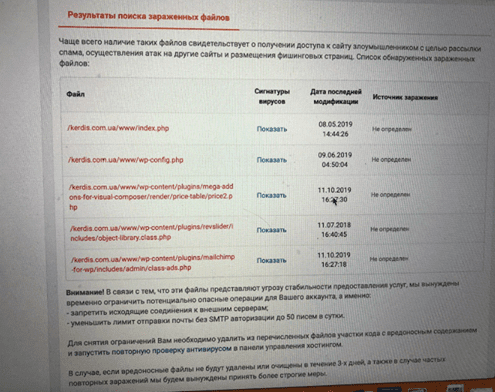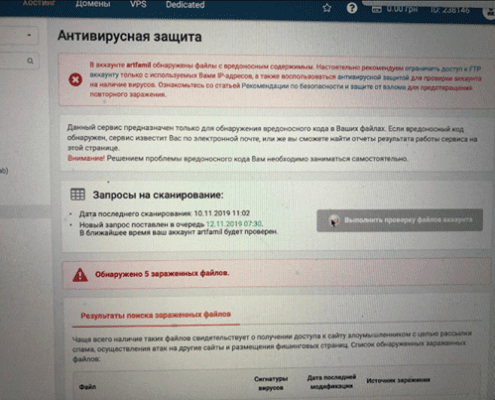There are several common ways a website can get infected with a virus:
1. A malicious actor gains access to the website through the most vulnerable parts of the scripts or the server. They modify server settings or templates, which leads to the injection of malicious code or redirects users to other websites. To prevent such issues, it’s essential to enhance website security by regularly updating the CMS, changing passwords systematically, and applying secure configurations.
2. A virus on the website owner’s computer captures the FTP password and sends it to a hacker or an automated bot, which then connects via FTP and infects the website. To protect your site from this type of infection, use a secure SFTP connection instead of FTP, avoid storing passwords in FTP clients, change them regularly, and scan your computer with antivirus software.
The website cleaning process includes 5 main stages:
1. Website diagnostics. A full scan is performed to detect viruses, spam, phishing pages, doorway pages, and other malicious elements. External scanning tools are used to identify search and mobile redirects, unsafe product codes, and potentially harmful scripts.
2. Cleaning infected pages. All detected infected components and hacker scripts are carefully removed by professionals while maintaining the full functionality of the website.
3. Installing protection against reinfection. Security specialists implement robust protection measures that eliminate the possibility of a repeated intrusion. Necessary adjustments are made to account data and server configurations.
4. Removing the website from blacklists. If the web service has been blocked or added to a list of infected sites, specialists send a request for a new review. After successful verification, the website is delisted from malware databases.
5. Detailed report. After the cleaning process is completed, each client receives a full report including a list of cleaned files, a summary of all changes made, and recommendations for maintaining the website’s security in the future.












